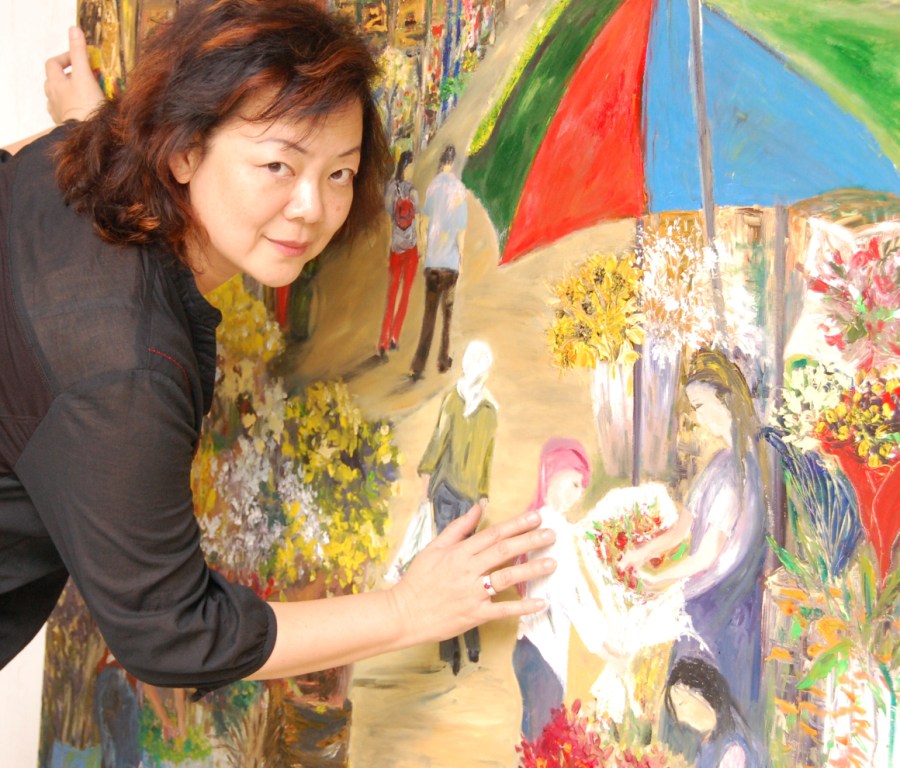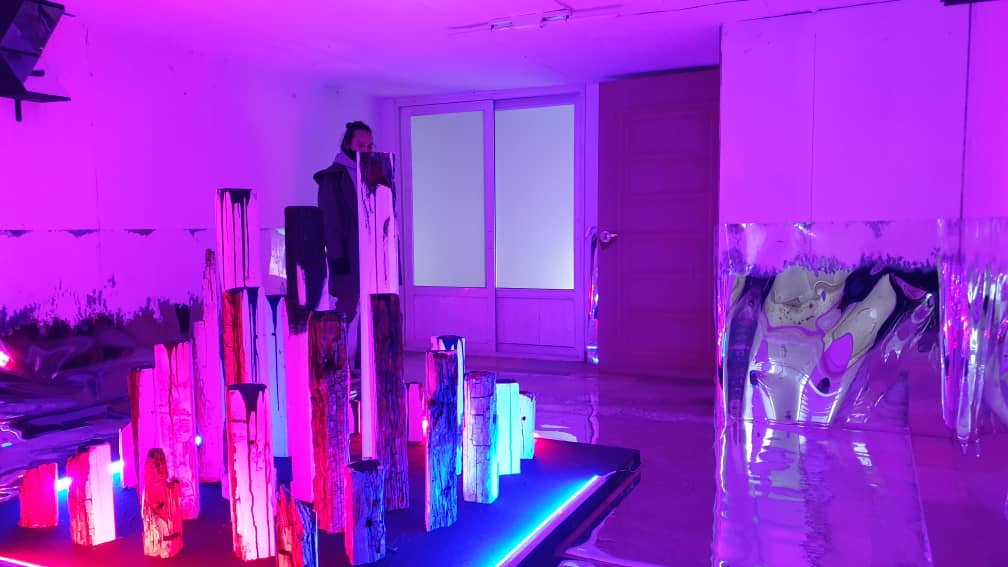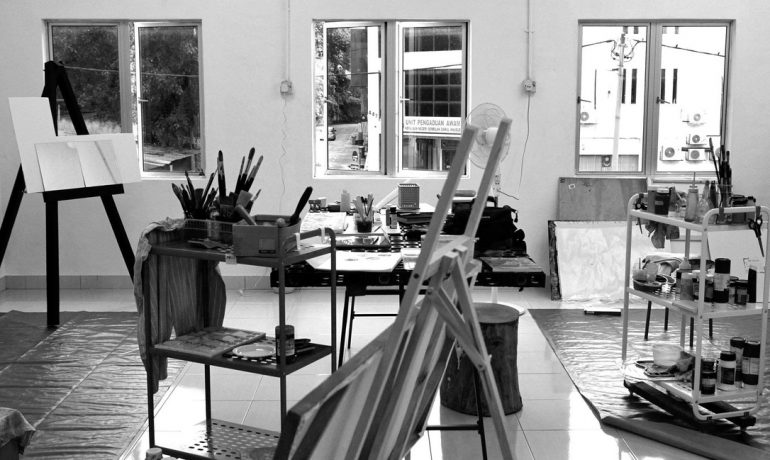While the concept of art residencies is not foreign to Malaysians, local art residency programmes have struggled to survive even before the days of social distancing.
By Deric Ee
Growing up in Seremban, my earliest exposure to the idea of art residencies came from my aunt, Karen Ee @ Kayee. In the 1990s, she was known for making handmade, life-like dolls sold in her gift shop in Bangsar Shopping Complex. She would eventually retire from doll-making at the turn of the millennium, her craft increasingly shunned by conservatives, and focused her energy on painting instead. With continued tutelage under acclaimed painter Peter Liew, her fortune shifted and the canvas became her passport to faraway places.
In the last decade, my aunt was invited to two residency programmes in Europe: the 21st Ludvig Symposium in Hungary, and 2. Bad Zwischenahner Artist Week in Germany. Each time, she only had to pack her things and buy a plane ticket—the rest was the responsibility of the organisers. It was a foreign idea to members of the family; art residencies can seem like paid vacations to the uninitiated. It didn’t help that some locations were so idyllic that my aunt spent more time regaling us with unforgettable experiences, like plucking fresh cherries off a tree.

As the sole artist among six siblings, Karen Ee @ Kayee’s participation in art residencies opened her family’s eyes to opportunities available in the arts.
Of course, what these residencies really offered was the environment and system that inspired people like my aunt to focus on what they do best. Both two-week programmes provided the space and resources for artists to create, with the German stint also including a public exhibition. In exchange for the stay, she had to leave them pieces of artwork which they could exhibit and sell. This is the gist of how art residencies traditionally operate: you can read more on the subject via Kay Lynn Chua’s checklist for attending art residencies in Malaysia.
Scoping residencies present
Malaysia had several active art residency programmes before COVID-19 put almost everyone on hold. Rimbun Dahan still has the best track record, hosting a total of 13 creators since 2020, and much has been written about the programme and the famed family behind it. Meanwhile, Shalini Ganendra’s decade-long Exploring East Residency concluded in 2019. But newly-launched initiatives, like the Hin Art Residency Programme, only managed to host three international artists before it was time to mask up.
“We’re putting the residency programme on hold right now because we don’t have people to run it,” explained Hin Bus Depot gallery manager Wanida Razali. “There’s a lack of funding and manpower. At the moment, we are focused on facilitating exhibitions and events.”
The arts and culture ecosystem is one which thrives on community and closeness, but the global health crisis has reduced it to a memory. Like Hin Bus Depot, Sembilan Art Residency has also gone on indefinite hiatus.
“Our programme isn’t limited to just studio time,” clarified James Yip, co-founder of the Sembilan’s programme. “As part of the residency programme, we also incorporate a development agenda for both the artist and the community. This enables them to do something that helps themselves, and something else that can give back to the community.”
Sembilan Art Residency’s programme ends with a physical exhibition which cannot be held with ease for the time being. While James acknowledges that it is not impossible to continue in the current climate, conditions are less than optimal considering both residency and artist’s investment in the programme. But he doesn’t discount the possibility of flipping the switch back on if the right talent shows up.
With no plans to continue in the foreseeable future, programmes like Sembilan and Hin’s are stuck as creatives jump online to save themselves.
Lessons from the past
To be fair, residencies were struggling to remain alive long before COVID-19. Consider this: the Cooler Lumpur Writer’s Residency lasted one year, as did the WOLO Artist Residency in Bukit Bintang.
Despite never formally referring to itself as a residency, the ill-fated Minut Init in Kuala Lumpur offered artists and cultural workers accommodation and guidance in exchange for their culture and craft. For almost five years, approved applicants assisted the gallery in operations while producing content based on their trade. Needing only to bear the cost of their own transport and meals, many foreign artists took turns completing stints at the gallery and produced a range of output: artwork, curated showcases, panel discussions, articles, and classes.
Founder, Dali Abdul Azis, is not fond of reminiscing about how the art space shut in 2018. The gallery struggled to find an audience beyond their own crowd; there was difficulty maintaining a stable source of revenue; gatekeepers (allegedly) hoard grants and resources for members of their own cliques. Furthermore, not every artist creates works that sell like hotcakes.

Dali’s work last brought him to a residency at 재미난복수 AGIT, Busan, mere months before the pandemic struck.
Three years since Minut Init closed its doors, Dali sounds jaded even if his ability as a painter has sent him places. Dali claims that there was a lot more support for his art outside of Malaysia, recalling that one time in South Korea where he participated as a resident artist and was “treated like a king”. Does Dali have a solution to improve the prospects of Malaysian art residencies?
“There’s a clear lack of interest from corporations in funding local art, especially when the art in question is different or challenging,” stated Dali. “We can’t build culture with low-impact, one-off investments in the arts. Artists and venues need continuous support, possibly in the form of long-term projects and commitments so that our art programmes can run sustainably.”
A most uncertain future
According to the Southeast Asian Art Residencies Meeting hosted by the Asia-Europe Foundation (ASEF) in 2018, art residencies around the region have been rethinking their operational models to remain relevant and sustainable. It was observed that established residencies were shifting from the traditional residency model—artists leaving behind creative output at the end of the sponsored residency period—to an arts education programme. This ensures a stable source of income for residencies in addition to producing quality work.
However, the outlook for local art residencies seems bleak. As the pandemic forces artists and art organisations to adapt to new ways of life, the future of art residencies in Malaysia appears unlikely to change. Rimbun Dahan is certain to continue under the auspices of its founders, offering the kind of experience my aunt used to share with us. But most programmes are likely to struggle as energies and content migrate online.
Cover photo courtesy of Sembilan Art Residency Programme (source)
Deric Ee is a Seremban-born writer, editor, and arts manager with a background in theatre and media. His love for the creative industry has brought him to Kuala Lumpur, Johor, and Penang to curate and manage cultural events and festivals.

